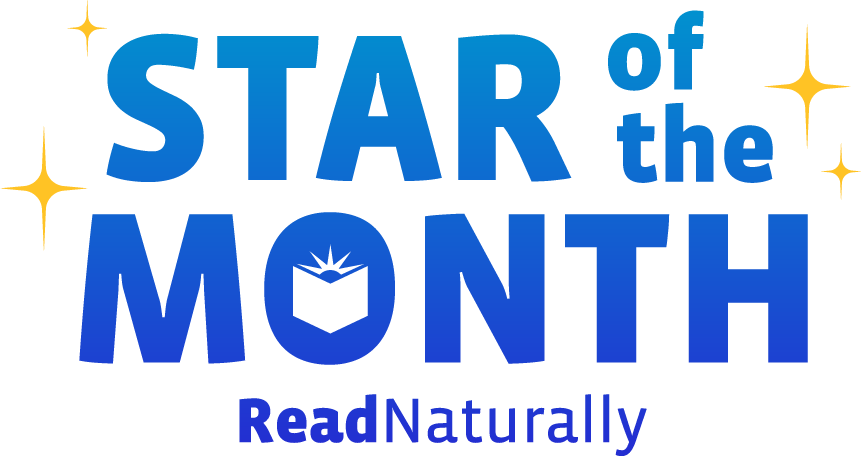When I first started teaching, I knew that independent reading was important. I knew I wanted to give my students the opportunity to read something on their own that they loved, but I didn’t realize the need to be specific and intentional in this practice. Because of this, I would provide time for “free reading” or “DEAR (Drop Everything and Read) Time” on a regular basis. However, it didn’t always go as planned. From time to time, I would have students flipping through pages of the book (not reading). Some students played in their desks during this time. I even had a student or two fall asleep. As a new teacher, I knew I needed to provide opportunity for more focused reading, but I didn’t know how to make that happen. I was frustrated with myself and my students.
Read more The word “troubleshooting” is the theme of this year’s Read Naturally lab! We’ve experienced a whole new way of teaching and making the best out of distance learning. At the beginning of the year, our school was lucky enough to be in session full-time, every day. This allowed for a somewhat normal Read Naturally schedule. However, due to the Covid19 situation, the school no longer allowed volunteers in the building. With 3 classes of 8-10 students, we were still in need of extra teachers. Zoom to the rescue!
Read more We have just about made it through the first semester of the school year, and we want to make certain that we are teaching our students vocabulary skills to the highest level possible. Among the very common questions we contemplate throughout the school year, there are always those questions of how we can reach our students and increase their level of mastery. How can we have our students dig deeper and increase their level of mastery?
Read more The most rewarding part of a Read Naturally intervention—for both students and teachers—is the progress students make. By this point in the school year, you likely have several students who have made significant gains in fluency, comprehension, or both. When you notice this growth, it’s time to assess whether the student needs an extra challenge in the form of a goal or level increase. Typically, you’ll make such a change after a student has completed 12 stories at his/her current level. Here are the signs it’s time to raise the goal or level:
Read more Striving readers need systematic phonics instruction. Word Warm-ups Live was developed to help students improve word recognition, learn to use word patterns to decode rapidly, read words with featured patterns in connected text, decode increasingly difficult phonetically regular words, and reinforce featured phonics skills through spelling.
Read more With the addition of Word Warm-ups Live, we’ve expanded our phonics offerings to reach a greater number of students and to provide more flexibility. It is our hope that any student in need of phonics support can benefit from our programs. The first step, of course, is to determine who needs that support. We offer a general phonics assessment, Quick Phonics Screener, as well as an assessment specifically for Word Warm-ups Live. What’s the difference, and how will you use these assessments to understand your students’ phonics needs?
Read more We recently expanded Read Live to include Word Warm-ups Live—an effective solution for students who need extra phonics support. Read Live now includes the Read Naturally Live Sequenced/Idioms Series, the Read Naturally Live Phonics Series, and Word Warm-ups Live. Which of these programs is the best fit for your students?
Read more As summer draws to a close, teachers and students everywhere are gearing up to begin a school year unlike any other. Task forces across the nation are pondering the question of how to meet students’ educational needs while also keeping the public safe. These leaders cannot rely on precedent to guide them—pandemic schooling is a brand-new reality. However, Hurricane Katrina is one event in recent history that can provide clues about how to resolve the learning losses caused by a long-term disruption in regular schooling.
Read more Read Naturally founder Candyce Ihnot continued her work with students in the Read Naturally reading lab at Faithful Shephard School this past school year. When schools moved to distance learning, Candyce met with Read Naturally Lead Teacher Sarah Voelbel to develop a plan. Their priority was to keep students engaged and to ensure the students could continue building their reading skills. Candyce and Sarah’s plan to combine Read Live and Zoom worked out better than expected. Below, Sarah shares her reflection on the experience.
Read more Distance-learning fatigue has likely set in for everyone by now. As summer break draws closer, it can feel even harder for teachers and students to stay focused. But we owe it to our students—now more than ever—to make these last few weeks count. Allow the Read Naturally team help you out with a bunch of free resources. These resources can easily be sent to students to complete at home.
Read more  Share your student’s success story—nominate him or her for our Star of the Month award. Win a Barnes & Noble gift card for the student and a Read Naturally gift certificate for your class!
Share your student’s success story—nominate him or her for our Star of the Month award. Win a Barnes & Noble gift card for the student and a Read Naturally gift certificate for your class!